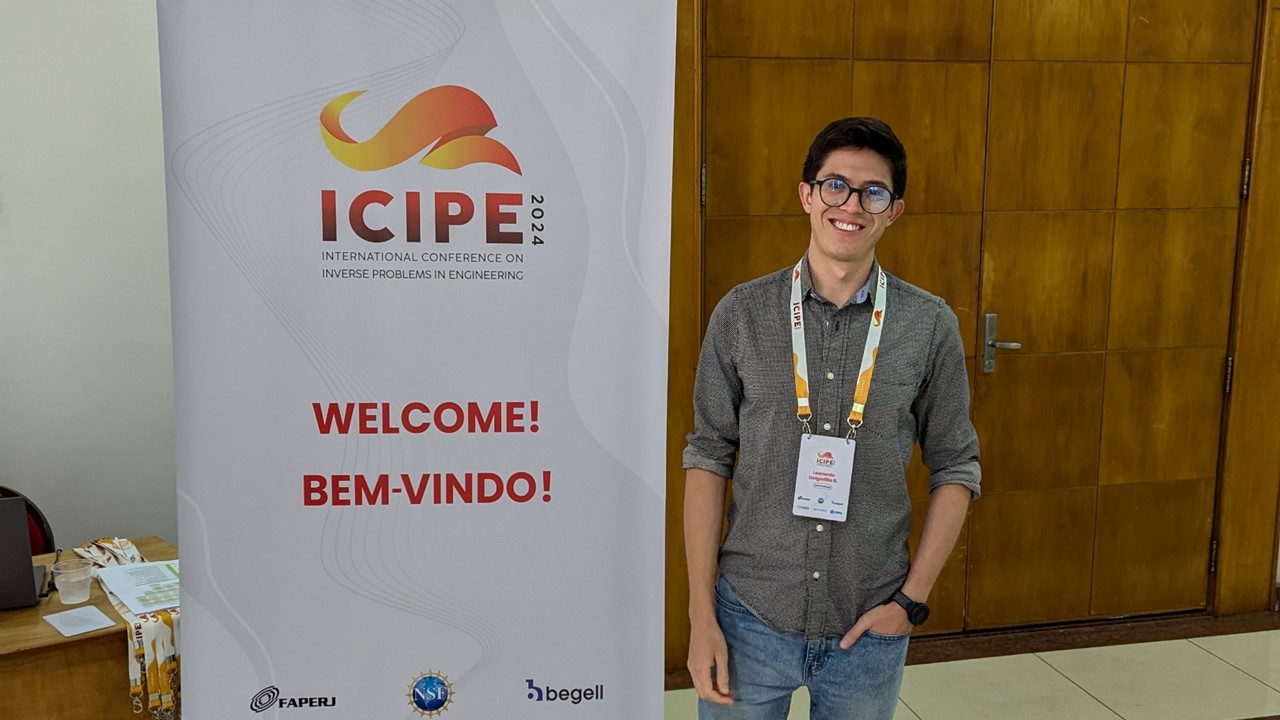Participation of Leonardo Delgadillo Buenrostro at the « ICIPE 2024 »!
Leonardo Delgadillo Buenrostro, a doctoral student in wood and bio-based materials engineering under the expert guidance of Pierre Blanchet, had the opportunity to participate in the « 11th International Conference on Inverse Problems in Engineering (ICIPE 2024) », held from June 23 to 28, 2024 in Brazil. At this event, Leonardo presented his innovative research on « Inverse heat transfer analysis to estimate thermal conductivity in a prefabricated lightweight wall ».
The main objective of the conference is to bring together researchers from different regions of the world, working on various inverse problem applications and their theoretical aspects, to present their most recent research results and to engage in technical discussions of their findings. The conference emphasized a broad range of deterministic, statistical, mathematical, computational, and experimental approaches that can be applied to the solution of inverse problems and the design of experiments.
This opportunity enabled Leonardo to share his discoveries and scientific advances with an international audience of peers and professionals during an oral presentation, thus broadening his areas of expertise and networks of contacts. The financial support of the CRMR’s student mobility program played a crucial role in making this enriching experience a reality. Thanks to this financial assistance, Leonardo was able to represent his institution and actively contribute to the advancement of research in his field of expertise.
Congratulations to Leonardo on this achievement, and we wish him every success in his academic and professional career!

Title of presentation: Inverse heat transfer analysis to estimate thermal conductivity in a prefabricated lightweight wall
Abstract. The present investigation uses inverse heat transfer analysis to estimate the thermal conductivity of the layers of a prefabricated wood-framed building envelope. Field measurements of temperature were recorded during one year at various positions within the walls of an occupied detached house. Experimental data was then used to identify the thermal conductivity of different building materials by solving inverse problems with two approaches: the first one simultaneously estimated various properties. At the same time, the second one did it independently one by one.
The significance of thermal conductivity estimation to ensure an accurate model calibration for thermal performance assessments was further discussed. For this purpose, the annual heat flux through the interior wall surface was computed using the estimated thermal conductivities with both approaches, then compared to that obtained by using database thermal property data. All the estimated thermal conductivities deviated by more than 40% from the original reference values. Even though the individual approach could estimate more parameters than the simultaneous one, the latter took into account the impact of one parameter over another during estimations. Consequently, no thermal conductivity had to overcompensate for another. The individual approach, by its inherent definition, was unable to frame the impact of many variables at the same time, constituting a notable drawback.
This demonstrates that the current simultaneous thermal characterization approach allows for more accurate predictions of the thermal performance of building envelopes.


